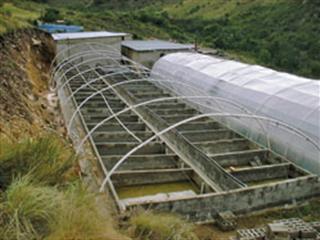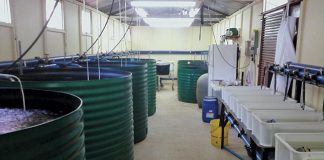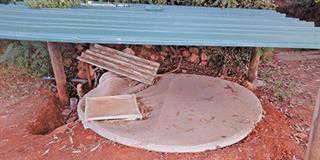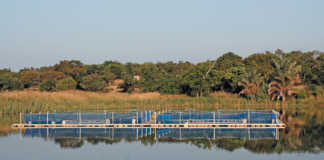
Filtration is the life-blood of the tunnel aquaculture system: without it, the fish will live in a ‘soup of their own making’, and soon perish. No Recirculating Aquaculture System (RAS) can operate without an efficient and sufficiently large bio-filtration system. As with tunnel design, filtration systems have several essential components:
- There is no substitute for volume.
- Grow-out tanks must be ‘pumped into’, NOT ‘pumped out of’.
- Pumping must be limited to once only.
- Gravity flow should be used through the filter compartments.
- Sedimentation, followed by mechanical filtration, followed by biological filtration are the three essential stages in water reconditioning.
I have seen systems where every stage of the filtration process (there are usually three to four stages) is pumped. Not only does this massively increase set-up and running costs, but also the number of things that can go wrong. The most important first stage, sedimentation, or the removal of solid waste matter, is too often either ignored or incorrectly dealt with.
Solid waste must be disposed of before the effluent water enters the biological filter in which clear water –
but still laden with dissolved ammonia products – is cleaned by beneficial bacteria on a filter medium through which the water passes very slowly. The use of closed-unit swimming pool-type sand filters is a recipe for disaster: they block rapidly, need repeated back-flushing which, when neglected, results in solid matter clogging the bio-filter.
This results in channelisation, whereby the still-polluted water passes too rapidly through the bio-filter without being cleaned, and then pumps the ammonia-filled water back to the grow-out tanks. Result? At best, reduced growth of the fish, at worst 100% mortality.
Bio-drums, fluidised-bed filters, swirl-separators, sand pressure filters, tower trickle-filters and the like may look great, but are not appropriate in tilapia culture in Africa. Many of these designs may work well in marine clear-water systems such as in abalone culture systems, where neither elevated water temperature nor water volume is a limiting factor.
Air-locks, pump cavitation, power cuts, filter-clogging, electrical circuit failure, unavailability of spares – all these inevitably occur after 5pm on a Friday when no one is around, and can result in massive mortalities. This is critical when there are tons of near harvestable fish in the system that can die within 30 minutes after filtration failure.
Grow-out tanks
Many system designers advocate circular plastic or fibreglass tanks for fish grow-out. These are invariably based on trout-culture systems, a totally different scenario from the tilapia which prefer warm water and are native to still-water conditions.
Circular tanks have some advantages:
- They are more easily assembled.
- They are generally self-cleaning if the inside bases are conically-sloped with a central drain.
- They can be moved if required.
- They are readily available.
However, circular tanks have several disadvantages:
- The waste of 40% of valuable floor space within the tunnel.
- Most are too deep (more than 1,2m). In tunnels the water is heated through the greenhouse effect where the sun sends energy to the earth’s surface in the form of light, which is absorbed and then reflected back as heat. This heat is then transferred to the water.
- Circular tanks made of thin-wall plastic or fibreglass have poor insulation properties.
- Some blue plastic liners are toxic to fish in the long term.
- They are easily damaged by the routines of catching and moving fish with nets.
- Thin-wall tanks are impossible to stand on the rim.
- ‘Catchability’ of fish in circular tanks is very difficult.
- Many circular tanks are black in colour: you can’t see the fish in a black tank!
- An alternative is a concrete-block system that can be built more shallow.
More on tank design and fish husbandry in the next article. Nicholas James is an ichthyologist and hatchery owner. Contact him at [email protected]. Please state ‘Aquaculture’ in the subject line of your email.













